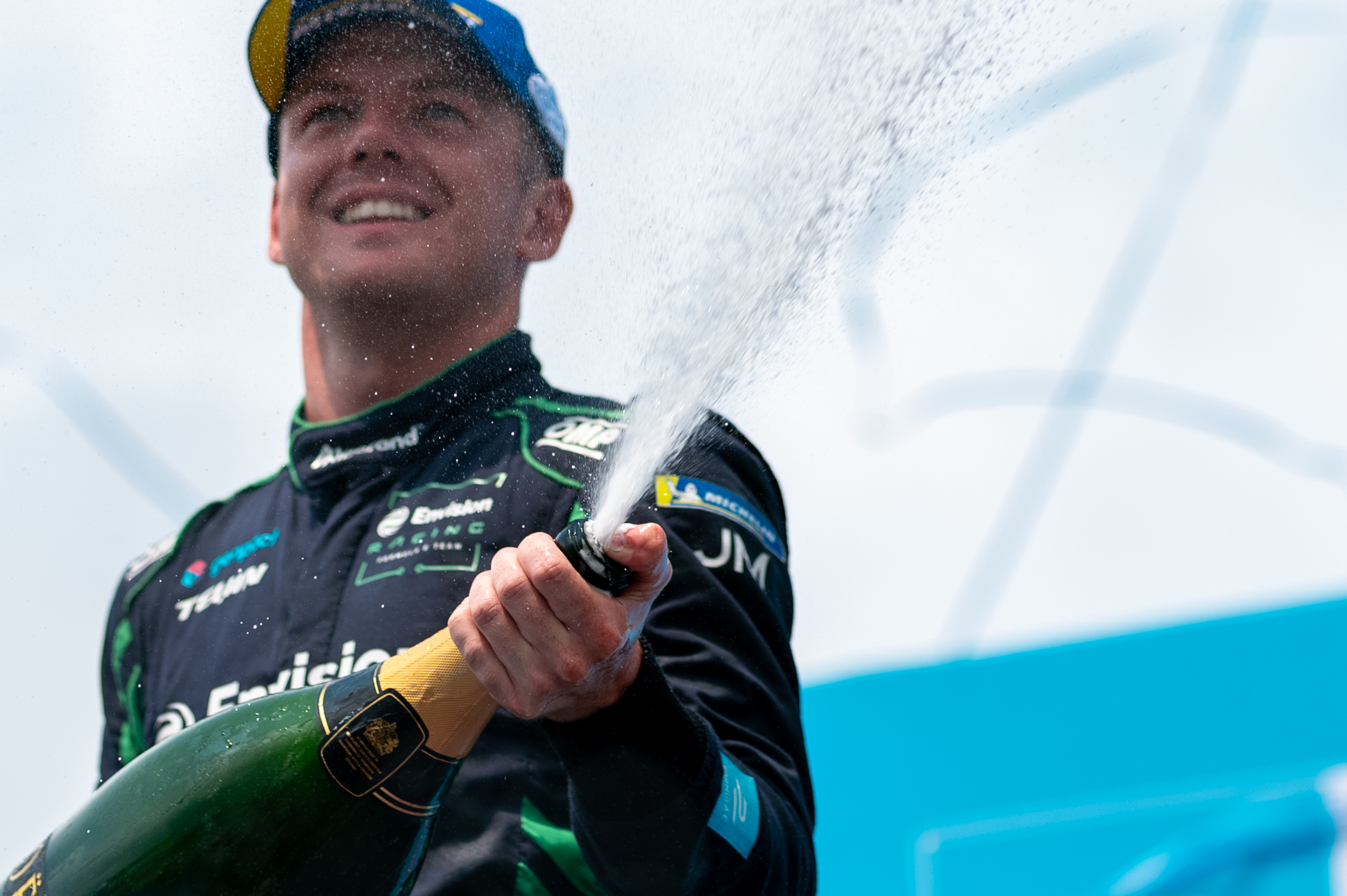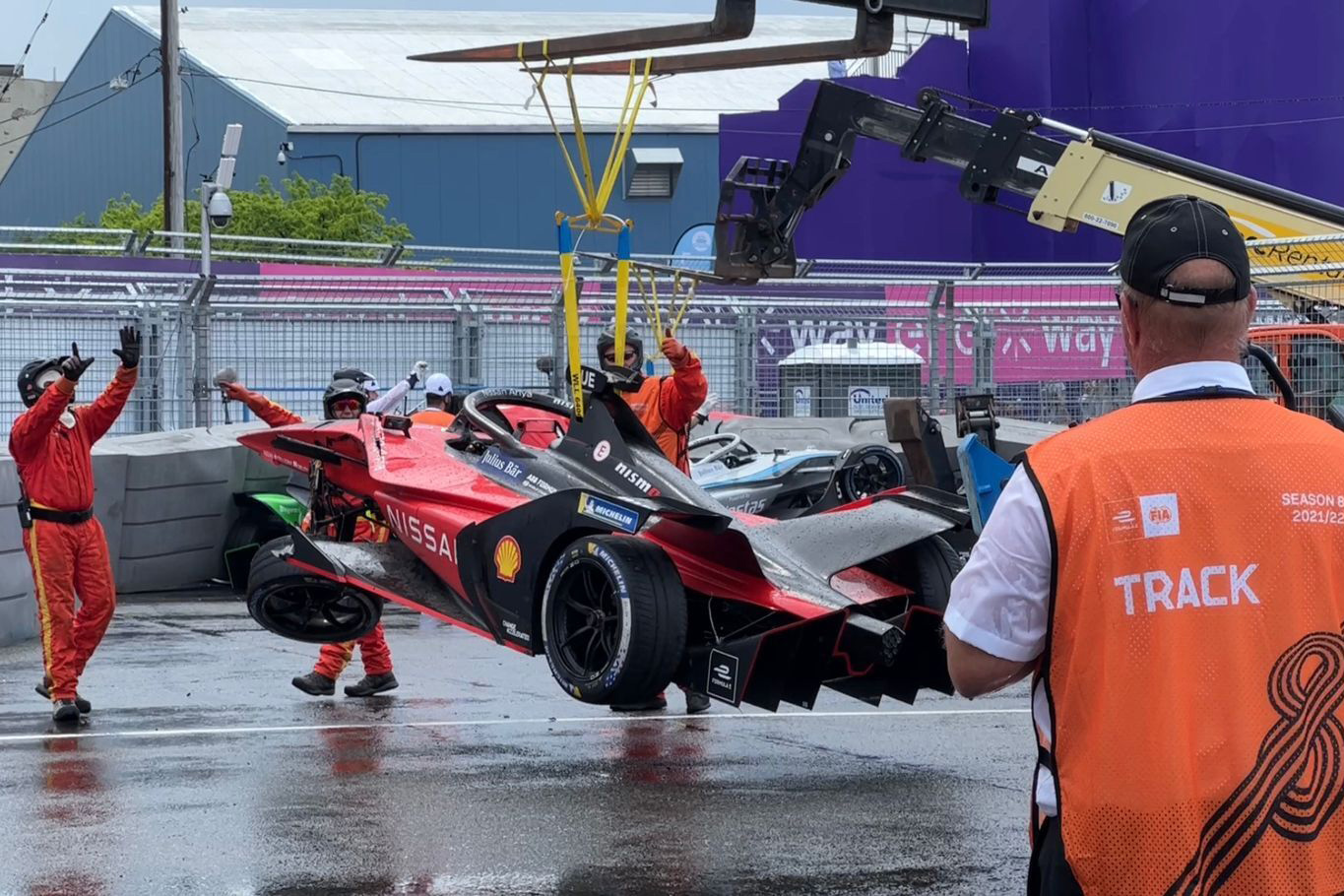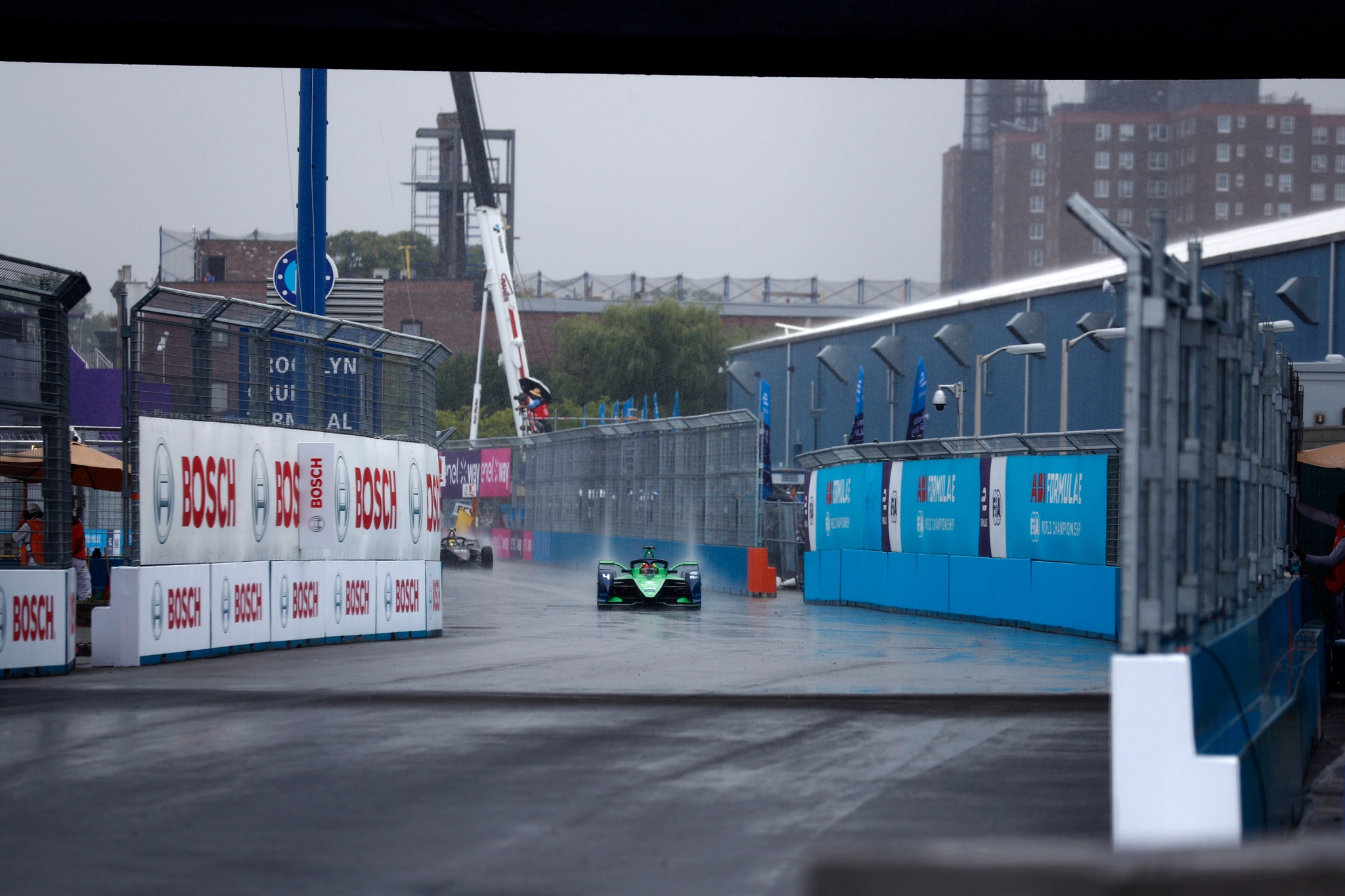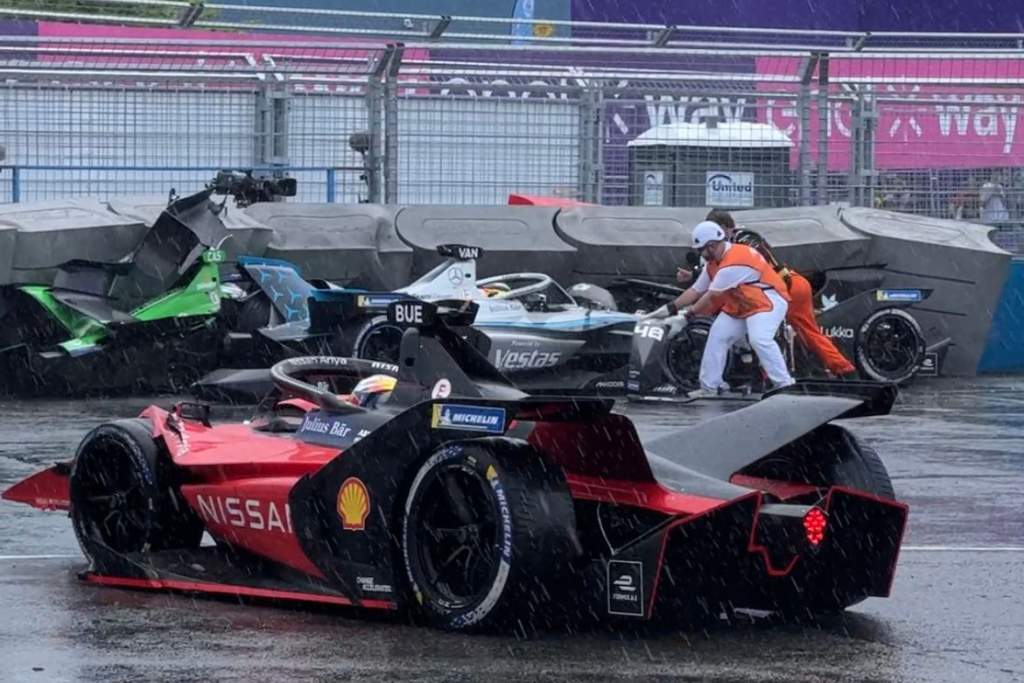Formula E championship contender Mitch Evans has questioned the decision not to restart Saturday’s New York City E-Prix after the multi-car aquaplaning incident that wiped out several of the leading runners after a cloudburst hit the Brooklyn street circuit.
But FIA Formula E race director, Scot Elkins, has explained the rationale for calling the race after the red flag and not completing the final minutes still on the clock.
A localised shower turned part of the track into a river that accounted for leader Nick Cassidy, Stoffel Vandoorne, Lucas di Grassi, Sebastien Buemi and Pascal Wehrlein.
Here's a look at exactly what happened in the wild crash that ended Formula E's #NYCEPrix when the leaders all aquaplaned into the wall – via Hugo Morales – IG: @gonzomau pic.twitter.com/AklA3Yyxhh
— The Race (@wearetherace) July 16, 2022
An instant red flag was flown after the incident, which occurred under full course yellow conditions, but the race was not restarted because lengthy car retrieval and barrier repairs had to be carried out.
As per article 41.9 of the 2022 FIA Formula E sporting regulations the results were ‘taken at the end of the penultimate lap before the lap during which the signal to suspend the race was given’.
This ensured that Cassidy took his first E-Prix win after 23 attempts, despite his Envision car being in the barriers having gone off then been collected by both di Grassi and Vandoorne.

Conversely, it relegated Jaguar driver Evans from a third place grid slot for a restart to an 11th place in the official classification. He had avoided the trouble and jumped up the order unscathed. But his actual result leaves him 26 points behind championship leader Edoardo Mortara and down to fourth overall.
Evans vented his frustration at the decision not to try a restart.
He told The Race that he had “nothing against the guys that got reinstated and got on the podium and got their positions back but I just completely disagree with it”.
“It just seems wrong,” he continued. “If qualifying gets red-flagged you lose your lap, if you cause a red flag in the race I don’t understand how you… yes, I know there is the golden rule of going back a lap, but it’s just like, you caused it. I just feel like it’s so wrong.
“We should have tried the safety car. It seemed like a bit of an overreaction because if they needed some more time to clear the cars up, red flag it.
“It’s a timed race, yeah fair enough, but at least let us do a few laps under safety car, feel the conditions out.
“As we saw this morning in qualifying, there was a quick downpour and then it just stopped.
“Yes there was a bit of aquaplaning but I still feel it was still OK to race.
“But to red-flag it straight away, I just don’t get it.”

Elkins said a full course yellow is the quickest instant option when a sudden downpour appears.
The FIA’s weather monitoring had indicated that showers were likely during the race, but they came only on one portion of the circuit, in what Elkins described as a freak shower caused by specifics of the New York City microclimate.
“Because of the way the buildings are and everything like that we were looking at it and the word we had was we were going to have some showers in 15 minutes based on the weather,” said Elkins.
“The truth of the matter is it came in three minutes and that’s what caught us off guard.
“It was really localised, really just down in [Turns] six and seven, so the minute we saw it happening the fastest thing for us to do was go to full course yellow.
“That’s what we did and once we saw how severe it was we went red.”
The decision not to restart the race for the remaining seven and a half minutes and one lap was taken, according to Elkins, after considering a combination of factors. These included damage to the Tecpro barriers and a shifting of the retaining wall.
Additionally, there was also discussion centred upon what Elkins described as a “safe restart” and not risking further incidents.
“We were kind of in the same position of, if we had restarted, whilst it had stopped raining the track hadn’t dried and we still had severe puddles,” Elkins explained.
“The idea was that even if we had restarted it would have been three or four laps behind the safety car to get feedback from the drivers to see what it was like and I didn’t even know if we were actually going to be able to go back to green flag anyway.
“Part of the process was – and part of the reason that it took a long time to come to the decision – I called the teams and was getting feedback from them, literally asking team managers ‘hey, talk to your driver, tell me about the conditions, tell me about what you think about going back out there’ and getting that feedback.”

That feedback went a large way in forming the decision not to restart as according to Elkins some of the drivers “didn’t feel like it was safe” to do so.
“The fact of that is the way that the regulations are written, how we define what the order is,” he continued.
“That regulation is very clear that we go back to the penultimate lap before the red and set the order. That’s how that played out.
“Maybe we could have discussions in the off season as to whether that regulation is right or not. I don’t know, it’s been a long standing rule in FIA and in all different series, everybody uses it.
“But in terms of the guys that crashed, I think about it this way: they’re not the ones that caused the red, the rain is what caused the red.
“Because it was so severe everywhere and we were having issues all over the place. That six and seven area, it was so severe.
“Someone is going to be happy; someone is going to be unhappy. But I feel like we got all the data we could and made the right decision in terms of keeping these guys safe.”
Mercedes driver Vandoorne was the leading championship protagonist in the final classification in fourth position.

His team boss, Ian James, broadly backed Elkins’ decision, saying the fact the cars’ all-weather tyres were so worn by then was also a factor.
“I don’t know whether they couldn’t repair the barrier or they just felt the conditions were just so unsafe,” James told The Race.
“Also, the tyres were fairly well worn by that stage, so had the people chosen not to change the tyres you’ve then got to question how safe that’s going to be.
“I think it was one of those decisions and it was an easy cut and dry call. From a safety perspective we probably took the right call in that decision.”






